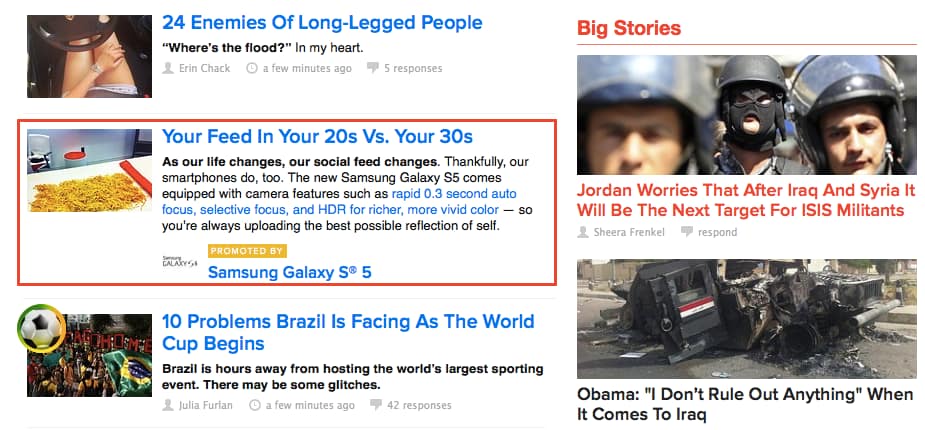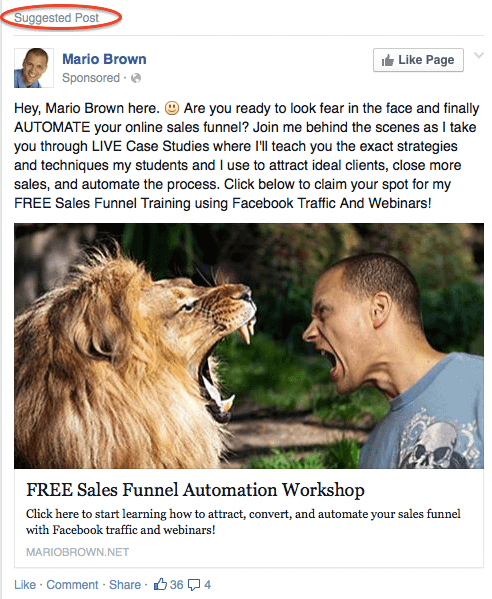If you’ve been paying for banner advertising over the past couple of years, it won’t surprise you to learn that click-through rates are at an all-time low. According to Google’s most recent DoubleClick Benchmarks Report, the average click-through rate for banner ads in Australia is a dismal .07%; and I think it’s particularly telling that the last time this report was published was in 2010.
Could it be that click-through rates, interaction rates and interaction times are so low that Google has decided to keep these numbers to themselves?
We may never know for sure, but we do know that banner blindness is alive and well. Marketers are increasingly going after new and more organic ways of reaching out to their target market. They know (and have seen firsthand) that people are more resistant than ever to traditional display ads, or really to any type of advertising that even ‘smells’ like advertising.
So where does this leave businesses that have traditionally relied on banner and display ads? How can they leverage the search traffic and audiences of other websites to drive targeted traffic to their own?
Enter native advertising.
Native ads are an attempt to make advertising less intrusive, less obvious and more compelling. Rather than placing a banner ad in the usual, expected positions (big box in the right sidebar, leaderboard at the top of the page, etc.), native ads blend in with the look and feel of a site’s existing content.
Native ads can take many forms, but some of the most popular are:
| 1 | Advertorials – Ads that mimic a typical piece of content |
| 2 | Promoted or sponsored content |
| 3 | ‘Other posts you may be interested in’ |
| 4 | Branded content |
| 5 | Product placement |
| 6 | Articles ‘from our friends’ |
While some argue that native ads have the potential to be unethical (for instance when a reader is led to believe a piece of content is unbiased), many marketers are realizing the immense potential native ads have, particularly when it comes to reaching a suspicious and resistant millennial audience.
Vanity Fair’s ‘From Our Partners’
BuzzFeed’s ‘Promoted by’ Content
While many big name sites like Vanity Fair and BuzzFeed have been utilizing native ads for a while now, I find the strategy hasn’t yet filtered down to the average business owner, or even to smaller web publishers who struggle to attract new advertisers. In fact, Copyblogger’s 2014 State of Native Advertising Report indicates that 49% of marketers don’t even know what native advertising is.
And part of the problem goes beyond simple ignorance: business owners may be aware of and interested in trying native advertising, yet may struggle to know exactly how to make it happen.
Following are some of the best ways the average business owner can utilize native ads – even on a small or non-existent budget. While some of these strategies may fall slightly outside the realm of what you’d normally think of as native advertising, they all have one thing in common: they’re advertising that doesn’t look like advertising, and they appeal to readers as they offer true value.
1. Reach out to a blogger in your niche to cross-promote each other’s content.
Rather than simply buying an ad spot on another site, why not suggest a strategic content-swap? For businesses with a similar demographic and audience-size, this strategy can often be successful without any money ever changing hands.
There are a few ways you can implement this process:
| 1 | Promoting each other’s content on social media or via your email list |
| 2 | Promoting a blog post as a ‘recommended article’ |
| 3 | Guest blogging on each other’s sites |
You may also want to consider a paid placement on a larger site; it may be worth the extra expenditure. And don’t be put off if a site doesn’t advertise any type of native ads or advertorial content options. Many publishers will be open to the idea, even if they don’t exlicitly offer it in their media or advertising kit.
2. Try native ads on social media.
While you may not have thought of them as such, promoted content on social media is considered a form of native advertising. Unlike ‘traditional’ Facebook ads (can you use the word traditional with something as new as social media?) which are essentially banner ads, options like Facebook promoted posts blend in with the look and feel of your Newsfeed.
Most major social networks now offer some type of native ad: YouTube has featured videos, Twitter has promoted tweets, and Facebook has promoted posts. In each of these cases, the intent is to have the ad resemble the look and feel of the surrounding content.
While it may not be clear to every social media user who sees them that they are, in fact, paid advertisements, I see many advertisers doing a relatively good job of targeting their ads to their audience and offering something of value.
3. Try out a sponsored content service.
Signing up with a content distribution company like Zemanta or Outbrain comes at a price, but will get your high-value content seen on sites like The Wall Street Journal, Reuters and People.com. Much like with Google AdWords, you can select your daily budget and Cost-per-click (CPC). This will allow you to keep a tight rein on your budget, and make changes as necessary.
The types of content you can typically promote include:
| 1 | Videos |
| 2 | Blog posts |
| 3 | Earned media |
| 4 | Slideshows |
Apart from the increased exposure your content will receive, the value of the inbound links to your site can also be significant.
How to Make Sure Your Native Ads Actually Work
While native advertising may, in fact, be the way forward for businesses looking to reach their target market, there are a couple of issues that must be kept in mind to make them truly effective.
1. Make sure they’re clearly marked as ‘sponsored’.
While native ads are, by definition, ads that blend in with the look and feel of the surrounding content, tricking visitors into thinking your content is an unbiased editorial certainly isn’t the goal. For this reason, the content should be clearly marked as sponsored; and the advertorial nature of the content should be clearly disclosed on the content itself.
2. Know how you’ll leverage the traffic generated from your ad.
As with all types of advertising and content marketing, being keenly aware of how you’ll leverage the traffic you receive from native ads is paramount. The last thing you want to do is invest hundreds or thousands of dollars in having your content promoted and read, only to never have contact with those potential customers again.
Ask yourself: What’s the goal of this ad? Is it to increase brand awareness? Or are you looking for more measurable outcomes like sales or email subscribers? Make sure your content includes a strong call to action if you want readers to do something after they’re done reading (click to download, sign up here, etc.).
I’m curious: Have you tried native advertising yet? And if you haven’t, does it sound like something you may try? Share below!
Image courtesy of Outbrain.com.





